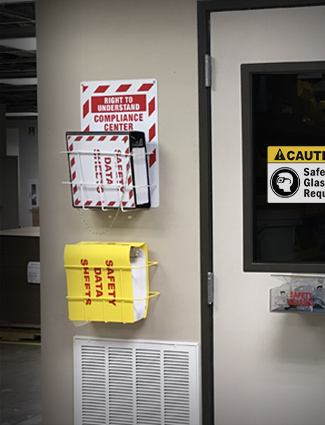Importance of a Chemical Risk Assessment
03
February,
2023
2 MINUTE READ

High-density polymers, chlorine vapors, metallic dusts and acidic liquids ? there are a variety of hazardous chemicals in use every day. Every workplace is different and needs its own approach for handling them to prevent fires, injuries, and even death. It is important for businesses to investigate the potential hazards posed by the chemicals in their facilities, through a chemical risk assessment. Once the assessment is complete, workplaces can ensure all employees have the training they need to recognize chemical hazards and know the correct ways to protect themselves.
Chemical Reaction
More than 32 million workers are potentially exposed to hazardous chemical products in the workplace, the Occupational Health and Safety Administration reports. To stay safe, these workers need to know what hazards they are being exposed to, and what steps they should take. OSHA requires employers to collect and communicate this information, but failing to do so is still far too common. Ranking at No. 2 among OSHA's Top 10 Violations of 2018, there were 4,552 Hazard Communication Standard violations. This was a 9 percent increase from 2017's HazCom violations.
In 2015, an industrial winery facility in Fresno was cited for not having an effective chemical risk assessment in place. A good risk assessment would identify failings and suggest improvements, which are now being mandated through a violation settlement. The company's large ammonia-based refrigeration systems require careful management and emergency planning, which was not being well-maintained.
In February, a vehicle parts distributor was cited for several workplace violations including failing to train employees to recognize chemical hazards. Also, the employer failed to maintain safety data sheets on chemical hazards.
"The inspection found multiple safety deficiencies that put employees at risk of serious and fatal injuries," said OSHA agent William Fulcher. "Potential workplace hazards must be assessed and eliminated to ensure employees are afforded a safe work environment."
 Formula for Safety Success
Formula for Safety Success
One way to identify and address workplace hazards is through a chemical risk assessment. The steps in conducting a routine chemical risk assessment help businesses:
- Recognize and understand chemical hazards
- Effectively apply controls to keep workers safe and productive
- Satisfy record-keeping requirements in compliance with HazCom 2012
- Provide appropriate training on chemical hazards in the workplace
- Keep workers aware and informed using signs, labels, and floor marking
Once a workplace chemical risk assessment is complete, safety managers can then observe the entire facility for a thorough safety and efficiency analysis. For example, safety managers can ensure eye wash stations are near where chemicals will be in use. Organize and label storage areas where face masks, gloves and other personal protective equipment are kept for chemical safety. The potential for worker injury increases when hazardous material classifications are incorrect and when there are defects in a safety sign or label's communication. Reinforce safety messages around eye wash stations, emergency kits, respiratory hazard areas, and ventilation systems through floor signs and boundary markings.
RELATED RESOURCES

Safety and Health Program Management Guidelines
The Safety and Health Program Management Guidelines provide employers and workers with a sound, flexible ...
Read
Corporate Disclosure Lags on Safety Metrics Reporting
Global companies are tracking workplace injury and safety data but are not making it public. Having ...
Read
Labeling is Crucial in Bulk Chemical Handling
Safety in handling bulk chemical unloading is a procedure that requires careful work and optimal ...
Read.png)


